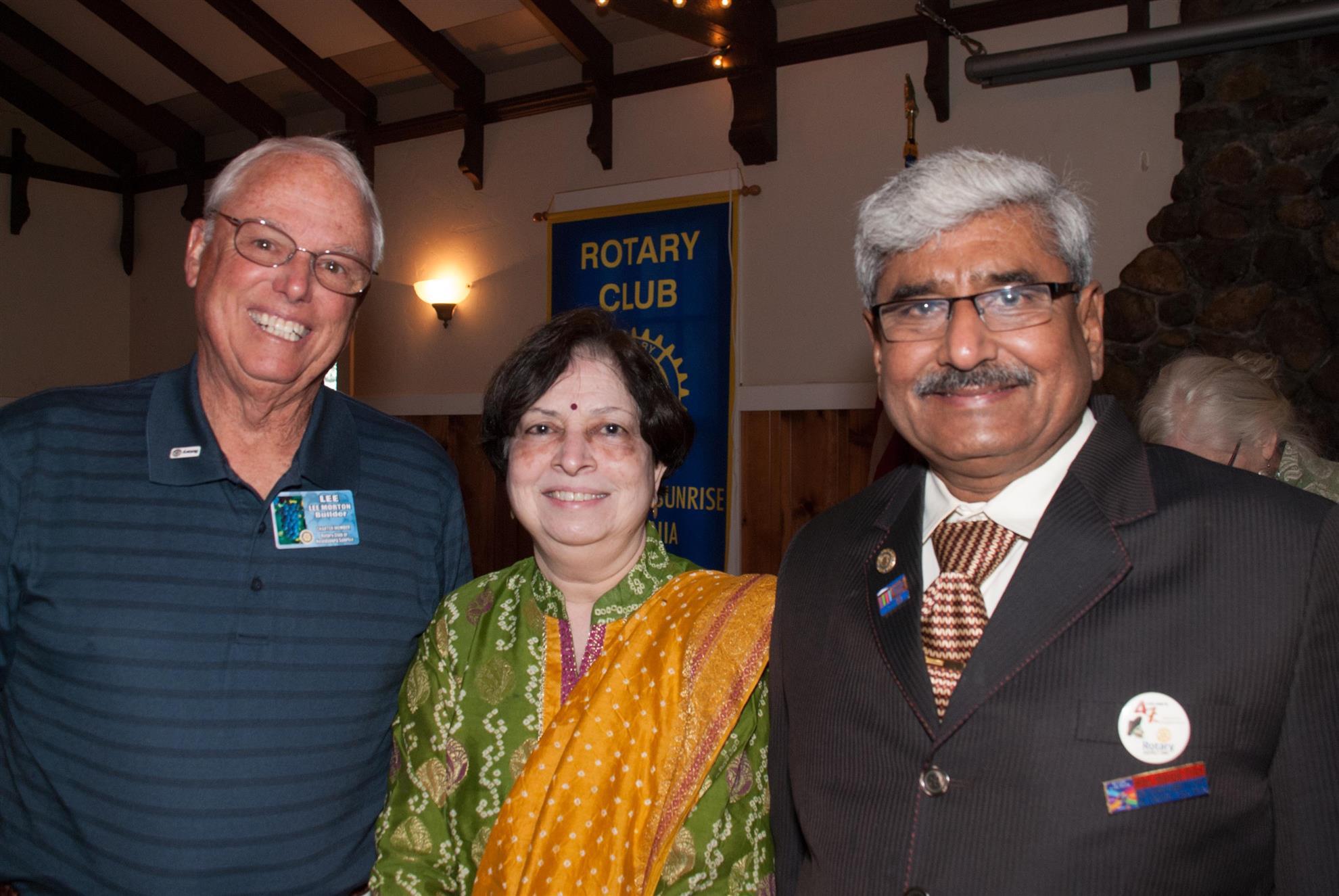Membership Development and Rotary India Literacy Mission
Mayur and Bini Vyas were present at our meeting as part of a Rotary Friendship Exchange.

Mayur and Bini Vyas were present at our meeting as part of a Rotary Friendship Exchange. They are from the Gujarat area of India, and were met by Pam Moulton on a Rotary Friendship Exchange program last year. They gave presentations on membership development as well as outlining an ambitious literacy project being conducted by Rotary in India.
Mayur Vyas spoke on the importance of membership development to maintaining a viable Club. He has extensive experience in membership, having served on numerous Rotary international committees in this area over his long history with Rotary. He started his presentation by pointing out that the membership in Rotary International has been stable at 1.2 million members, worldwide, since the mid-1990s. There has not been a net gain in membership in Rotary over that interval, although there are certainly many more people in the world who could be very good Rotarians if only we would reach out to them. Increased membership is necessary to spread the message of the good that Rotary does in the world. Rotarians, who incorporate the ideals of Rotary service in our daily lives interact in the community and can stimulate more people to follow in our path. The best way to expand membership is by our living examples of what we, as Rotarians, can do.
He gave a brief history of his Club in India which he held up as a prototype of all Clubs in terms of its ups and downs in membership and effectiveness in the community. His Club reached a zenith of 100 members in 1996. It was involved in numerous projects and had generated over $3 million for community projects in the 15 or 20 years before that time. In less than five years, the Club had dwindled to 26 members and was not much of a local factor in providing service.
Factors leading to the decline of participation in this Club were primarily influenced by issues of dominance of certain members which led to decreased participation of other less dominant members and a decrease in the cohesiveness within the Club. Other factors that contribute to the decline of membership including a lack of financial discipline, no stable meeting place, lack of interesting programs and meaningful projects.
Members would be inducted, but would usually leave within a year. There was not much awareness at the district level of this turnover of new members, and he states that district involvement was very helpful in the plan to turn around his Club membership. The underlying theme for all of the reasons that the Club declined was a lack of communication and the development of fellowship bonds between Club members, both in their social interactions at meetings, as well as in their involvement in working on projects together.
As President., he was aggressive in revitalizing since his Club by maintaining lists of prospective members and contacting them regularly about the service provided by the Club and how their participation would be essential for increasing the amount of service that could be done. The importance of having a dynamic and effective Pres. and leadership in the Club was very important. Most Clubs do well if they adhere to their bylaws and communicate with all members on issues brought before the Board of Directors in a written format. Strategic planning needs to be done on a regular basis, usually involving the outgoing, current and incoming presidents as well as the next president elect. A strong orientation program is essential for new members and mentorship with another fellow Rotarian is critical to their participation and retention. His club also provides professional leadership training for all interested new members.
His club constantly strives for more community projects as well as working on engaging Rotarians and their families in social activities to create a strong bond between all members.'s Club also helps to provide professional leadership training for all new members.
His wife, also a Rotarian holding multiple Paul Harris fellowships gave a very brief overview of the ambitious literacy program that the Rotary Clubs in India are involved with. The project is called Rotary India Literacy Mission and focuses on five areas exemplified by the acronym TEACH. Each Rotary Club is assigned one school in their region which they will work for a three-year period of time, bringing them up to speed so that they may be approved by the state and the operations assumed by the state at that time.
T is for teacher development, bringing the local teachers up to speed in terms of teaching skills, knowledge base, and helping them to engage with community members.
E is for electronic learning. All students have access to computers and course syllabi are all on computer. Homework assignments are done on their computers.
A is for adult education. Not only do they attempt to teach children in the grades of 1-8 but also try to increase literacy of the adults in the community as well as promoting the importance of education for the benefit of their entire community..
C is for community outreach, hoping to find those children who are not in school because they have to work, or who have dropped out of school to return to work. They have very high capture and retention rates for these students.
H is for happy schools. Happy schools are those that have uniforms for the students, proper footwear, proper seating, clean water, proper sanitation and a conference room where teachers can work collaboratively when they are away from students during the day.
The program is highly successful and her Rotary Club is now on its third school, having extended the project over a period of at least six or seven years when they brought two other schools to a state of preparedness.